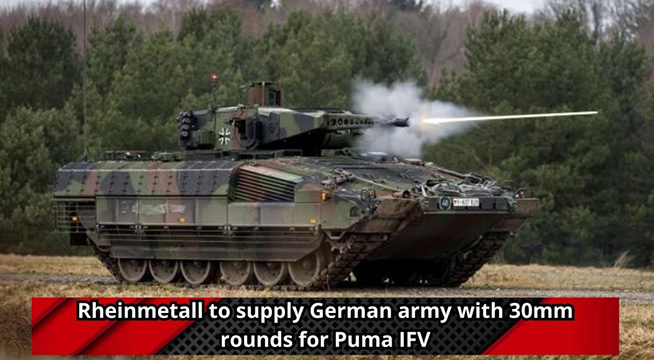
The German Kiel Institute has published a disturbing, but accurate report on German and European defense. The report suggests that the overall picture for Germany, Europe and the United States, is grim, writes Stephen Bryen, a former US Deputy Under Secretary of Defense.
The bottom line is that despite all the NATO war talk, NATO (including the United States) is not ready for any conflict with Russia. It also suggests that the pricing of defense equipment is making defense companies rich, but not helping the overall cause of security.
The Kiel Institute was founded in 1914 and is regarded as Germany's leading influential think tank. In September, the Institute produced a study called "Fit for war in decades: Europe's and Germany's slow rearmament vis a vis Russia." The study is very important: it points out how unprepared Germany and other European countries are should Russia attack them. It tells a sad tale about how overpriced and insufficient is European, specifically German, defense manufacturing.
The Puma is an infantry fighting vehicle. The Puma costs a staggering $5.3 million each! But get this, the 30mm ammunition for the Puma comes to around €1,000 per shot! Puma can fire up to 600 rounds per minute. That compares to a US 30mm High Explosive Dual Purpose round (more specialized than a run of the mill bullet) at $100. So German 30mm ammunition is ten times more expensive than from the US.
The German army also is buying tactical military headsets for soldiers. Commercially available tactical headsets are available on a retail basis for $299. If you add features such as noise cancellation, the price may go up to $400, not more. But the German headsets cost a whopping € 2700!
The bottom line is that people are making a lot of money supplying European armies or sending stuff to Ukraine. Some might say it is outright corruption, since governments are unwilling, perhaps complicit, in these deals. Mind that the Kiel Institute only goes as far as saying these purchases are uber-expensive, no more.
All of this helps explain, in part, that Germany's investments in defense are corrupted (I think that is the right word) by excessively expensive hardware. Even if Germany actually meets the NATO target of 2.1% of GDP for defense, what the German army ends up getting is extremely overpriced, not to mention that a lot of it is ending up in Ukraine and only slowly, if at all, replaced on the home front.
Even with adequate spending, what money is spent on boggles the mind.
Overall, NATO-supplied air defenses have done a mediocre to extremely poor job in Ukraine, a harbinger of a deadly future in Europe unless the problem is corrected.
Larry Johnson pointed out to me an intriguing footnote (page 25) in the report, set in ultra-small type and easily ignored. The footnote discusses Ukraine's ability to shoot down Russian missiles and drones. "Sample interception rates for commonly used Russian missiles in 2024: 50% for the older Kalibr subsonic cruise missiles, 22% for modern subsonic cruise missiles (e.g. Kh-69), 4% for modern ballistic missiles (e.g. Iskander-M), 0.6% for S-300/400 supersonic long-range SAM, and 0.55% for the Kh-22 supersonic anti-ship missile. Data on interception rates of hypersonic missiles is scarce: Ukraine claims a 25% interception rate for hypersonic Kinzhal and Zircon missiles, but Ukrainian sources also indicate such interceptions require salvo firing all 32 launchers in a US-style Patriot battery to have any chance to shoot down a single hypersonic missile.."
Take note that interceptor missiles for Patriot are in ultra short supply. These missiles take a long time to manufacture, and gearing up to make them has proven challenging. There is a shortage of critical components, also bolloxing production lines.
The US has sold Patriot and other systems to Ukraine, but even when they function their intercept rate is below par.
And the future is also concerning as hypersonic weapons arrive on the battlefield, as already they have in Ukraine in the form of Kinzhal and Zircon. Systems like Patriot or Iris-T or any of the other NATO air defense systems hardly stand a chance against hypersonic attack missiles.
Above all the Kiel report puts a new and important perspective on Europe's security situation and, by extension, the US as it is pledged by treaty to help defend Europe.
Instead of constantly expanding NATO and creating angst in Europe and Russia, it is time to step back and see if a credible defense of Europe is possible.
Right now, the answer is, it cannot.
read more in our Telegram-channel https://t.me/The_International_Affairs

 10:18 26.10.2024 •
10:18 26.10.2024 •






















